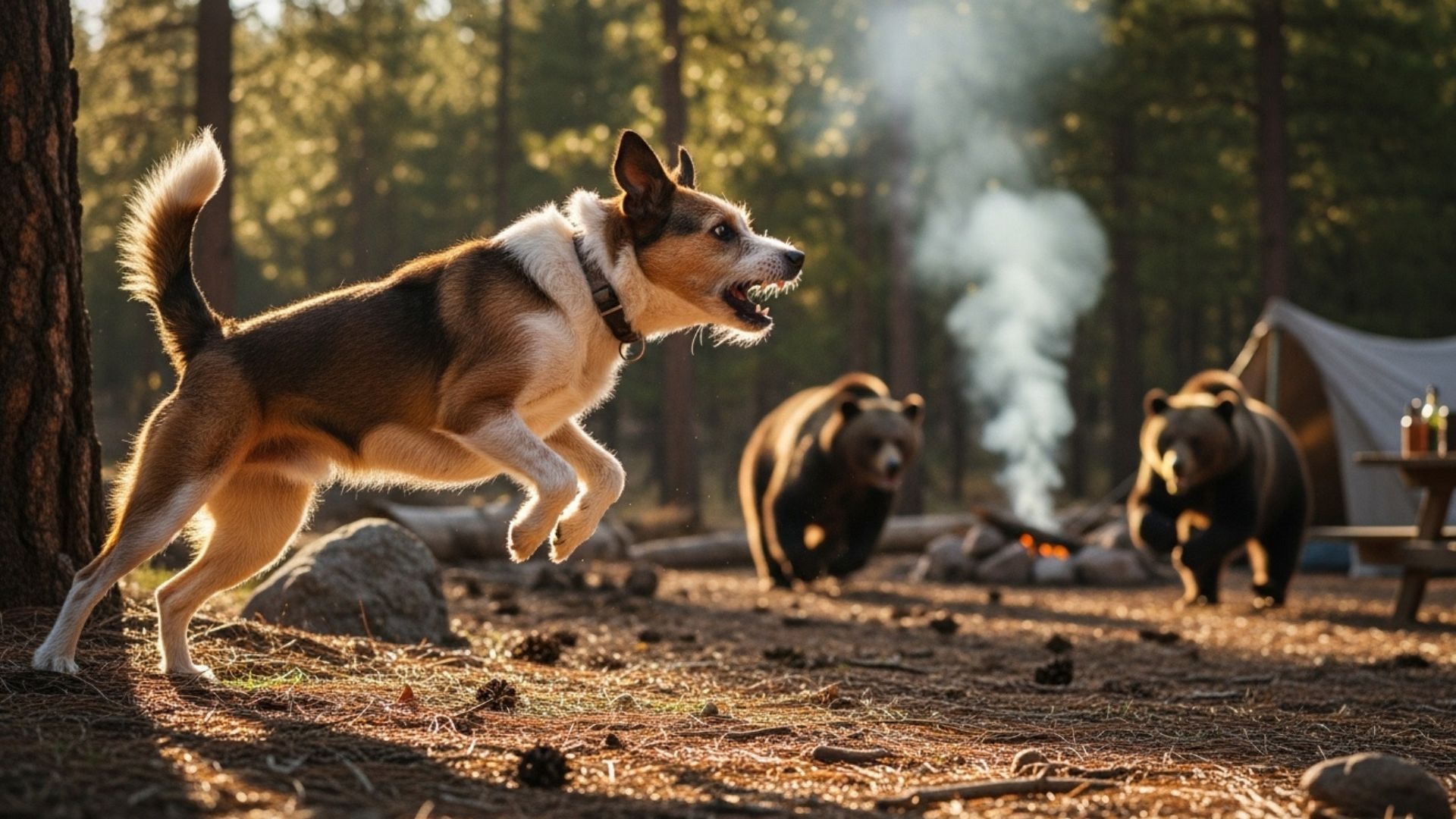Imagine sitting by a crackling campfire, deep in the wilderness, when a shadow moves just beyond the light. Before fear can set in, your loyal dog charges forward—brave, barking, and unflinching.
That’s not a scene from a movie; it’s history. For centuries, certain dog breeds have stood between humans and danger, fearlessly chasing off massive predators like bears. These courageous canines weren’t just pets—they were protectors, bred for strength, loyalty, and unbreakable spirit.
From mountain dogs that guarded flocks to northern breeds that defended camps, their legacy is nothing short of heroic. Today, they may be family companions, but deep down, the courage that once kept entire camps safe still runs in their blood.
Today, we’ll uncover 9 extraordinary dog breeds that once faced bears head-on—proving that bravery truly comes on four legs.
Fact Flash: In history, powerful breeds like the Karelian Bear Dog were bred in Finland to deter bears. These fearless dogs use their agility and loud barks to distract and chase away predators without direct confrontation.
Dog Breeds That Chased Bears Away From Camps
1. Karelian Bear Dog
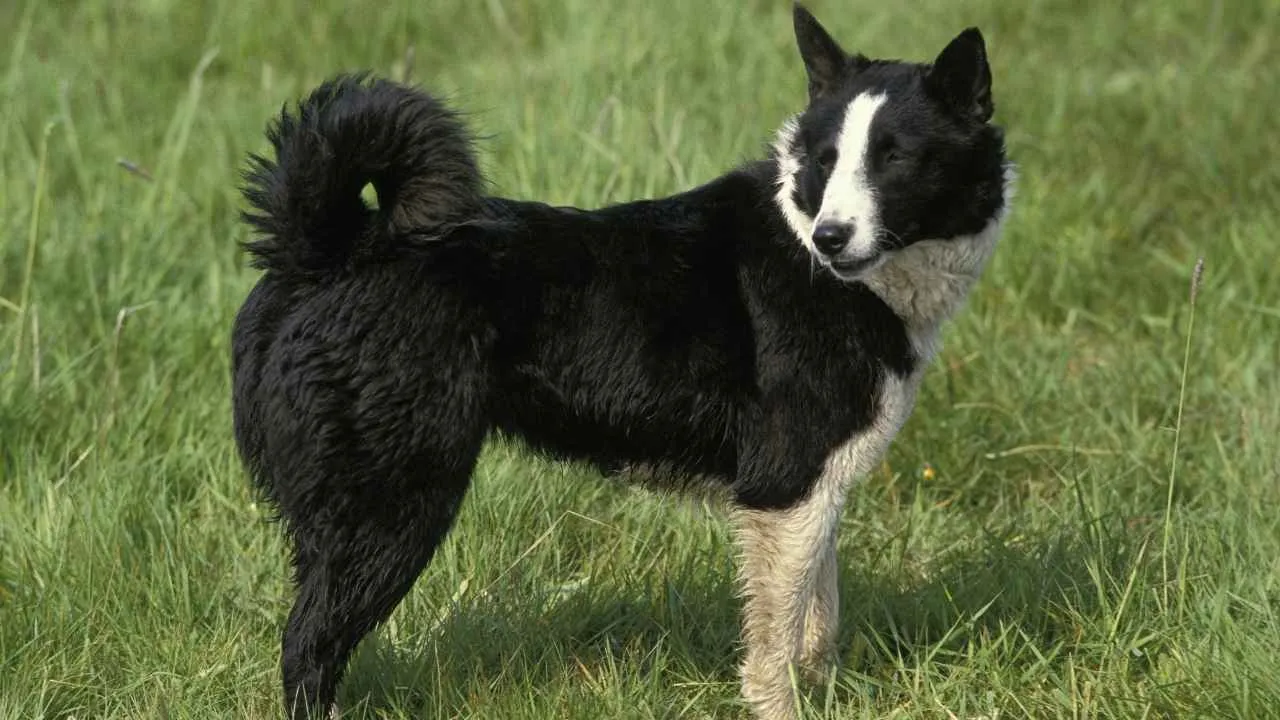
Straight out of Finland (home of reindeer, saunas, and people who think snow is a personality trait), the Karelian Bear Dog has a résumé that would make a superhero jealous. For centuries, these dogs have been the ultimate big-game partners — tracking moose, elk, and yes, bears.
Imagine having the courage to look a 600-pound grizzly in the eye and bark, “Not today, furball.” The Karelian’s secret weapon? Pure confidence and lightning-fast reflexes.
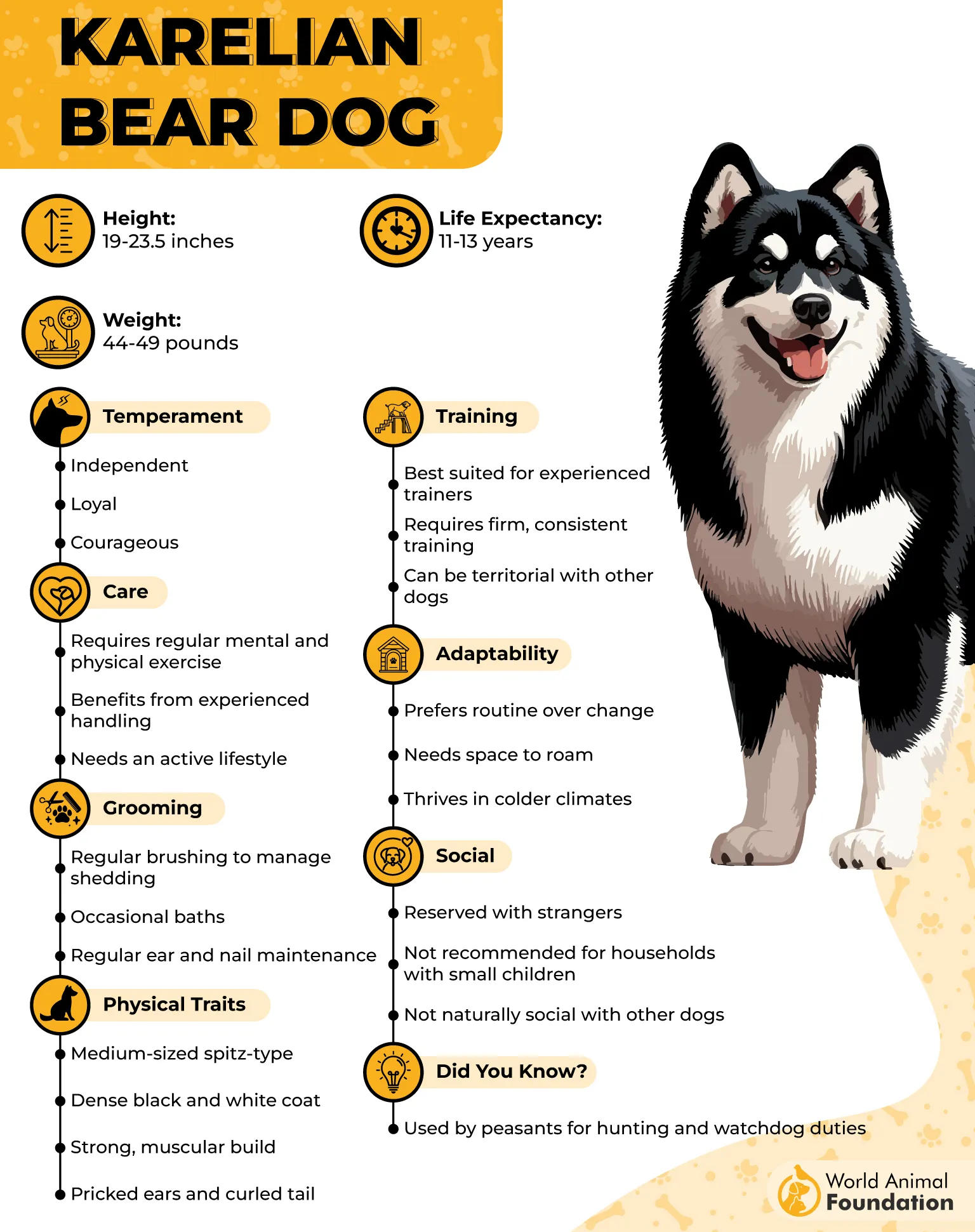
Despite their wild job description, these dogs are total softies at home. They’ll chase off a bear one minute and curl up at your feet for a nap the next.
Due to their long background as hunting dogs, Karelian Bear Dogs are rarely kept purely as family pets and tend to have an independent, work-driven nature, PetMD noted.
With their bold black-and-white coats and piercing eyes, these dogs look like they walked straight out of an action movie. And if your camping buddy happens to be one, you can probably sleep soundly — just make sure the s’mores are bear-proofed.
Fun fact: Karelian Bear Dogs are actually employed in some parts of North America to help wildlife officials manage bears — by literally scaring them back into the wilderness.
2. Caucasian Shepherd
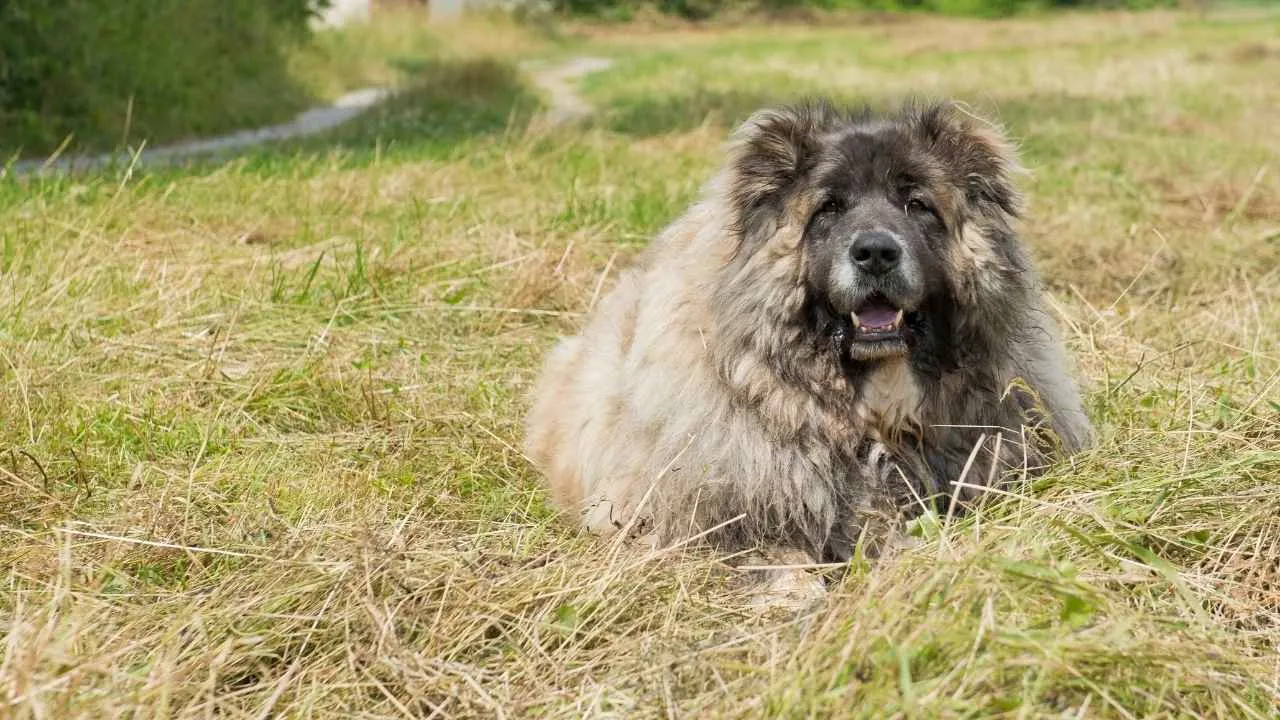
If the Karelian Bear Dog is the forest’s fearless scout, then the Caucasian Shepherd is the mountain’s immovable wall of fur and muscle. This colossal dog looks less like a household pet and more like something out of a medieval legend — the kind of guardian you’d expect to find protecting castles.
Originating from the rugged Caucasus Mountains between Europe and Asia, these dogs were bred to protect flocks from the fiercest predators around — wolves, jackals, and yes, even bears.
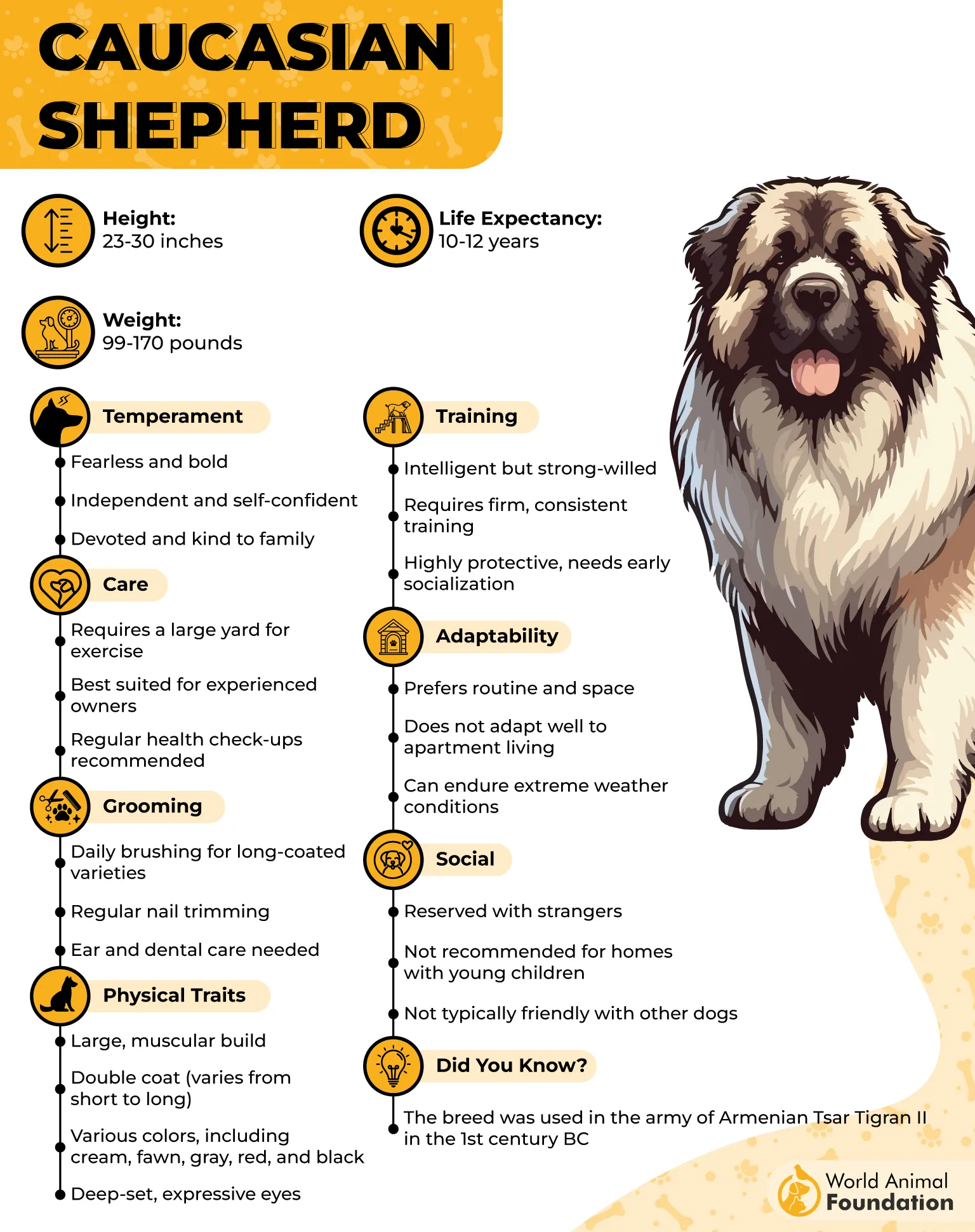
Imagine being a bear creeping up on a flock of sheep, only to see a 175-pound wall of fluff charging at you with the confidence of a linebacker who’s had too much coffee. You’d probably reconsider your dinner plans.
The Caucasian Shepherd, also called the Caucasian Ovcharka, is bravery and loyalty wrapped in a shaggy coat of pure intimidation. Their thick fur not only keeps them warm in freezing mountain blizzards but also makes them look even bigger — like a walking polar bear that’s on the good guys’ team.
When used in bear hunting, these dogs don’t just bark from the sidelines. Nope — they charge straight into the action. Their job is to track the bear, corner it, and keep it occupied until the hunters catch up.
But here’s the twist — for all their muscle and might, Caucasian Shepherds are gentle giants with their families. They’re loyal to the bone, protective of their pack, and surprisingly affectionate when they’re off duty.
3. Tibetan Mastiff
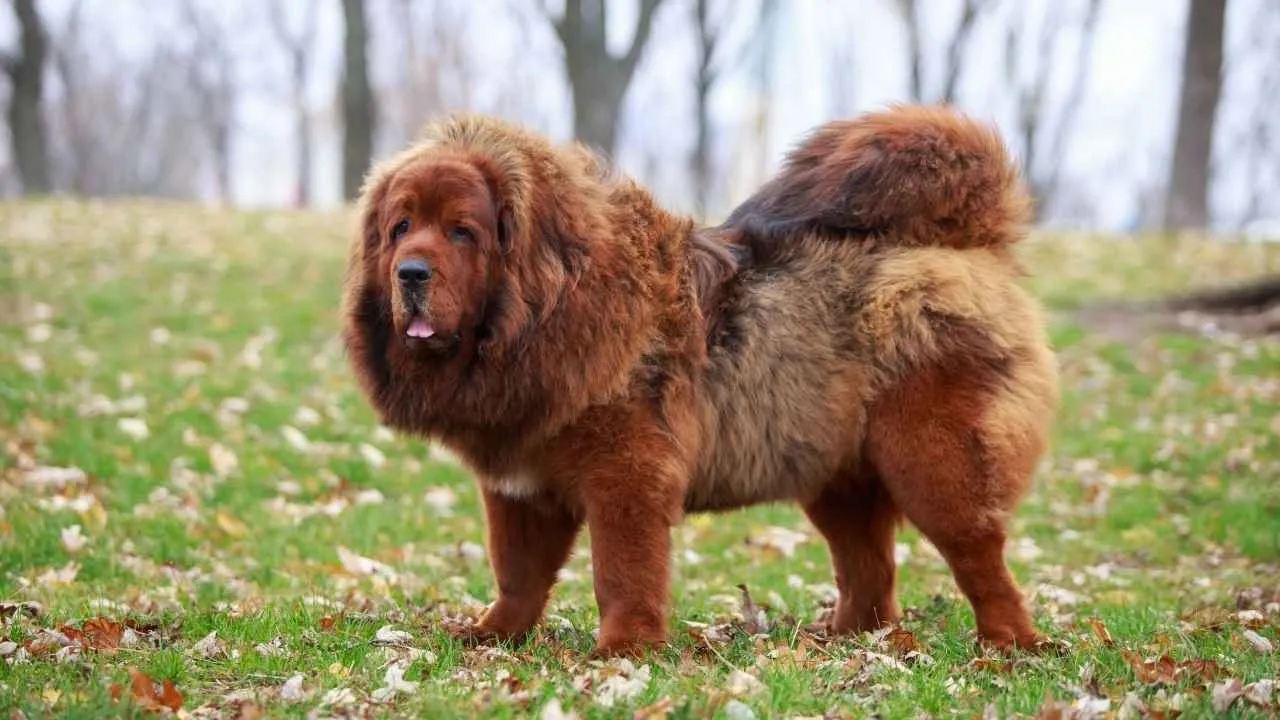
If dogs had royalty, the Tibetan Mastiff would sit proudly on the throne, probably wearing a golden collar and judging everyone from a snowy mountaintop. This ancient breed hails from the high, mystical Tibetan Plateau — a land where the air is thin, the mountains are tall, and the bears are… well, big.
The Tibetan Mastiff wasn’t just a pet; it was a guardian, a protector of herds, homes, and entire villages. When night fell and the predators crept out, these dogs were the ultimate “Do Not Disturb” sign. Bears, wolves, snow leopards — nothing wanted to mess with a mastiff who looked like it had just walked out of a legend.
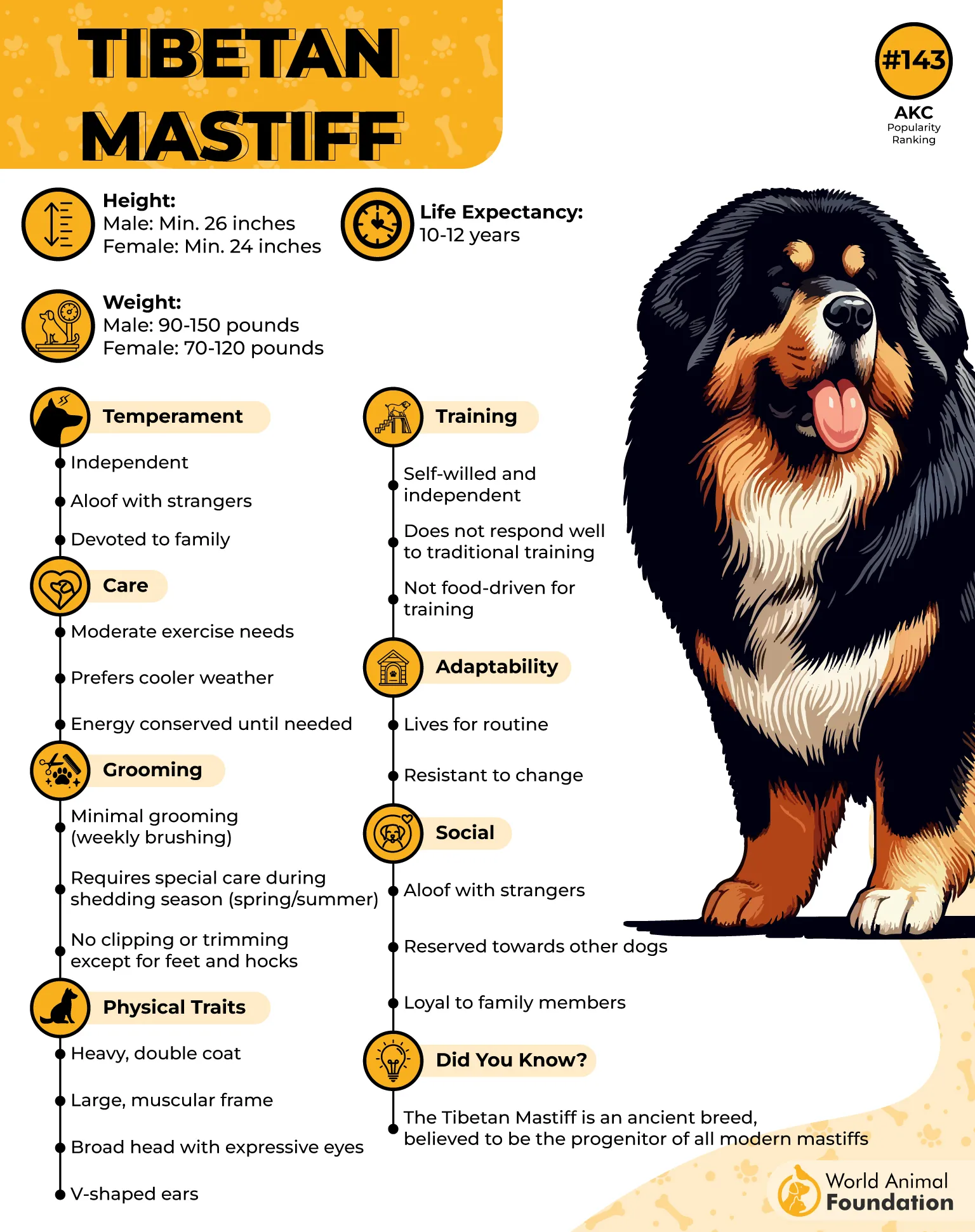
With their thick double coat and lion-like mane, these dogs don’t just look majestic — they own it. They were bred to endure freezing mountain nights and face off against predators that would make most dogs hide behind the nearest yak.
They’re generally calm and quiet when indoors, but if left outside overnight, they may bark to alert or express their independence.
Secure fencing is essential since these clever dogs are known to be skilled climbers. Because of their territorial nature, they might not be the ideal choice for families with small children or very active, social households.
So, while their ancestors chased bears away from mountain camps, today’s Tibetan Mastiffs are more likely to chase squirrels in the backyard — though, if a bear did show up, you can bet they’d be ready to defend their family like the noble mountain warriors they are.
4. Alaskan Malamute
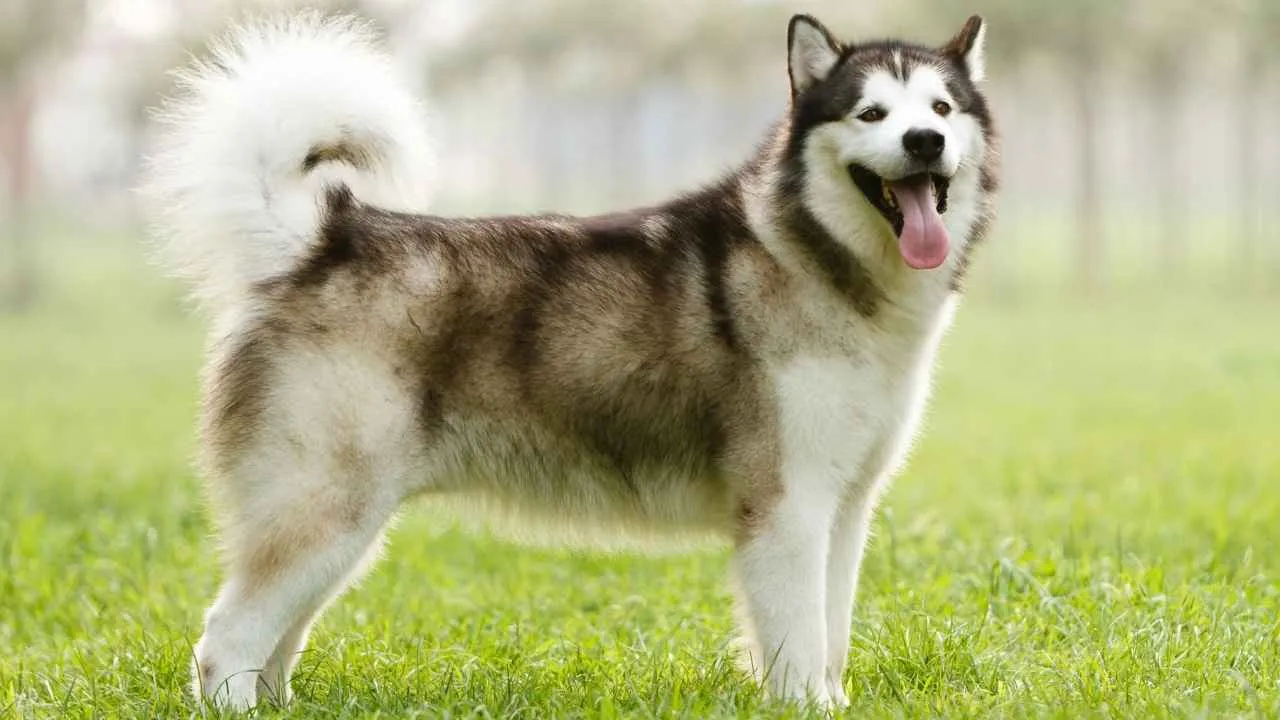
Originally bred by the native Mahlemut Inuit people of Alaska, Malamutes were designed to do one thing really, really well — work hard in brutal conditions.
These dogs hauled heavy sleds across endless snowfields, guarded camps, and yes, helped chase away unwanted visitors like wolves… and the occasional curious bear. When you’ve got a dog that can pull a sled all day and still have energy to play in the snow, even a bear has to think twice before wandering too close.
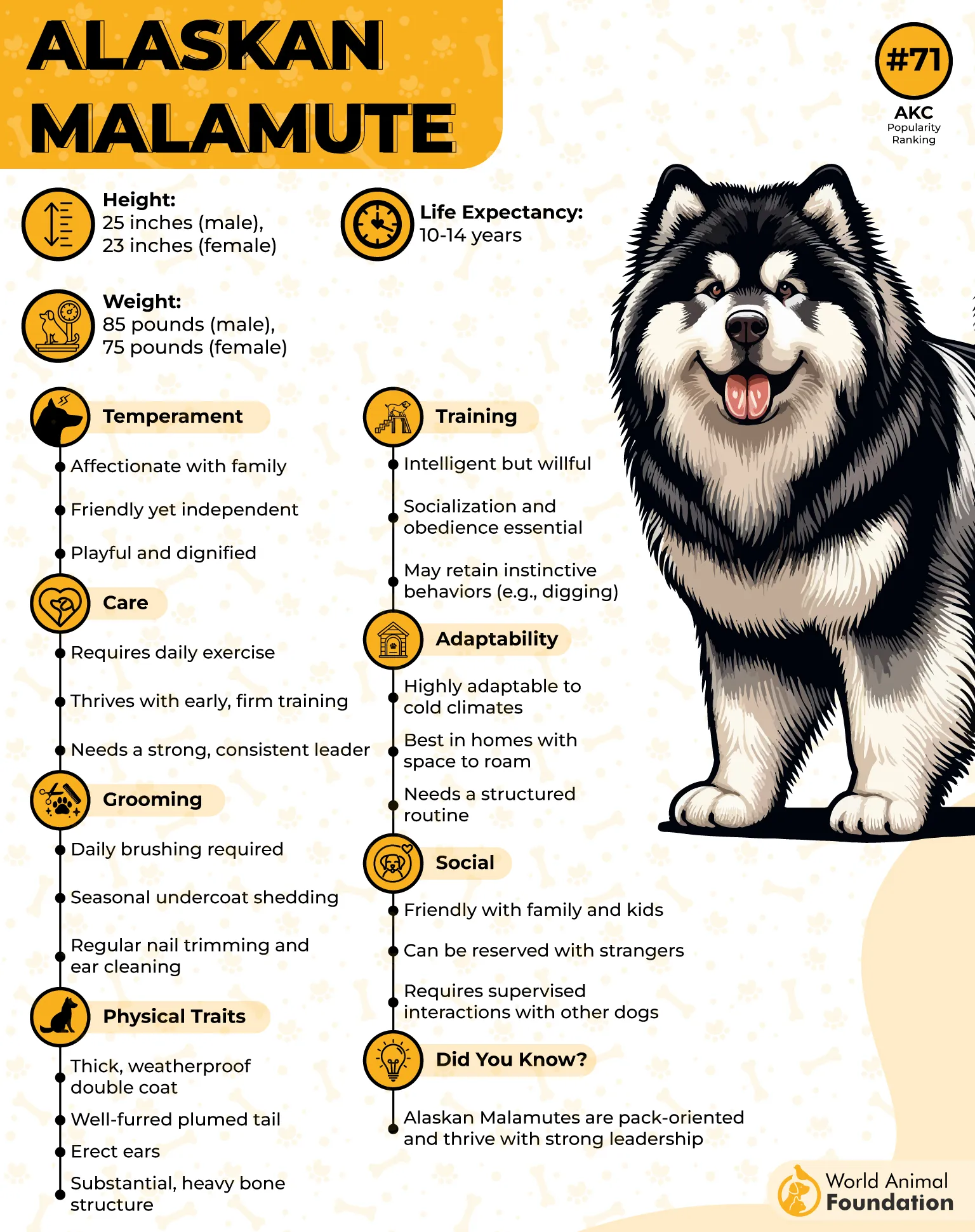
Malamutes are massive, muscular, and mischievous in equal measure. They’re not the type to back down from a challenge — unless it involves skipping dinner. Their dense double coat is basically nature’s best winter jacket, keeping them warm even when temperatures make your eyelashes freeze.
They’re known for being incredibly loyal, friendly, and great with kids — as long as you don’t mind your “lap dog” weighing close to 100 pounds. They’ll happily pull your sled, guard your tent, or snuggle up beside the campfire.
And that voice? Oh, they don’t bark much — they talk. Malamutes are famous for their soulful howls and “woo-woo” conversations that make them sound like they’re trying to debate you about bedtime.
So, while their ancestors once helped humans survive the harsh Alaskan wilderness — sometimes even scaring off bears that got too close — today’s Malamutes are more likely to scare off boredom and melt hearts with those fluffy hugs.
5. Anatolian Shepherd
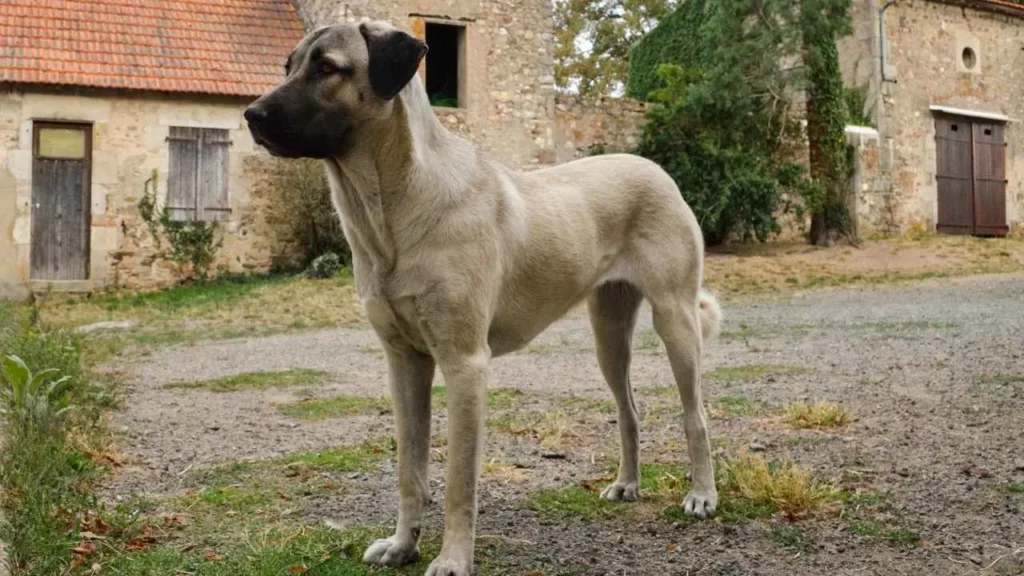
This legendary breed hails from the rugged plains of Turkey, where for thousands of years, it’s stood guard over flocks, farms, and families. Wolves? Not a problem. Bears? Just another reason for this dog to stretch its legs.
The Anatolian Shepherd was bred to protect livestock from some of the fiercest predators in the world — including bears and big cats. These dogs didn’t just chase danger away; they dared it to try again.
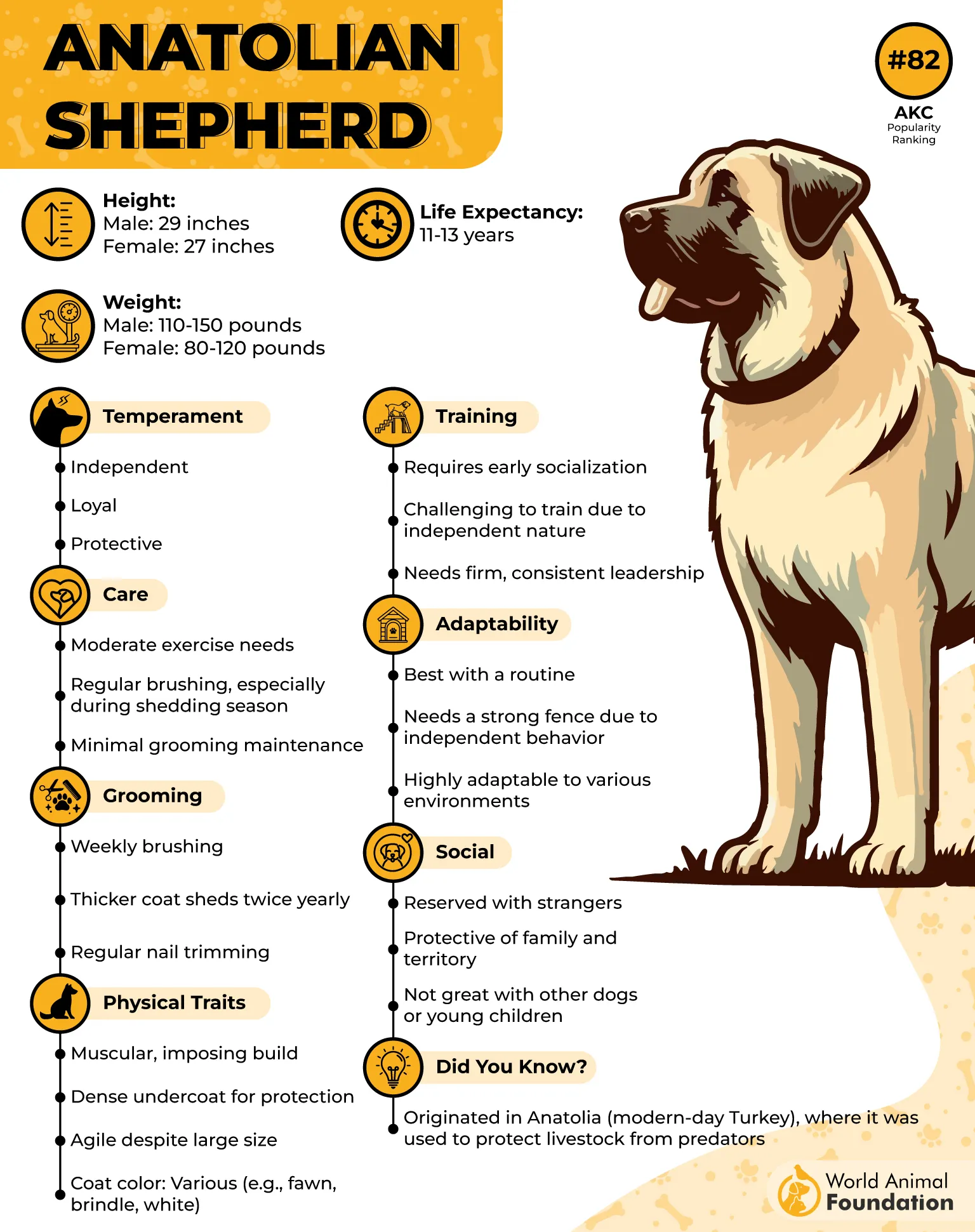
Picture a 150-pound wall of muscle, covered in a short, weatherproof coat, calmly watching the horizon like a four-legged sentinel. The moment something threatens the herd, the Anatolian springs into action with the speed and precision of a seasoned soldier.
What makes them truly fascinating is their independence and intelligence. These dogs don’t wait for instructions — they assess the situation and handle it themselves. Out in the Turkish highlands, that kind of quick thinking wasn’t optional; it was survival.
But don’t let that tough exterior fool you. Off duty, the Anatolian Shepherd is loyal, gentle, and deeply attached to their humans. They’re known to form strong bonds with children, often becoming quiet, watchful protectors — like a big, furry guardian angel with a bark that can shake mountains.
When it comes to personality, think of them as the strong, silent type — not overly affectionate, but always watching, always ready. They’re not the life of the party… they’re the one making sure the party stays safe.
So, if a bear ever wandered a little too close to your campsite, an Anatolian Shepherd wouldn’t panic — it would simply step forward, plant its paws, and give the kind of low growl that says, “You’re not on the guest list.”
6. Great Pyrenees
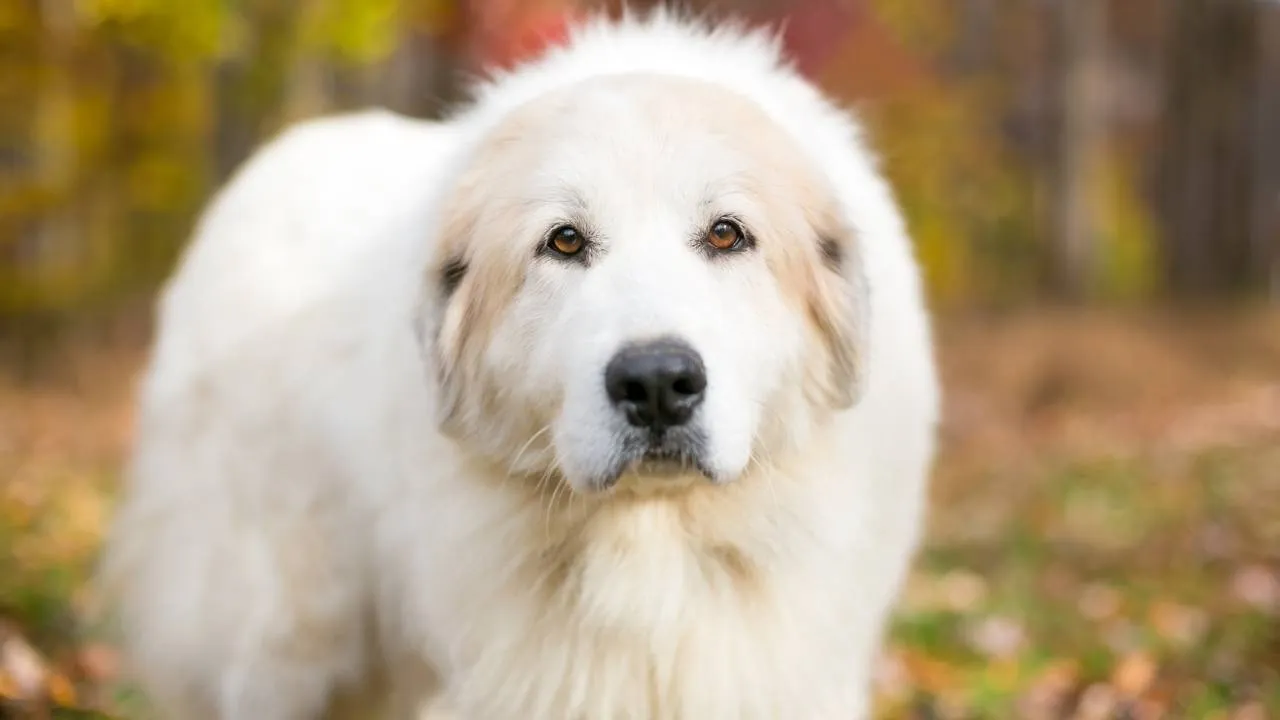
Meet the Great Pyrenees, the snow-white sentinel of the high peaks — majestic, calm, and always just a little too fluffy to take entirely seriously.
Don’t be fooled by that angelic appearance; beneath that cloudlike coat beats the heart of a guardian who’s been keeping bears and wolves in check for centuries.
Originally bred to guard sheep in the Pyrenees Mountains between France and Spain, these dogs took their job very seriously. Picture this: a quiet, moonlit night in the mountains.
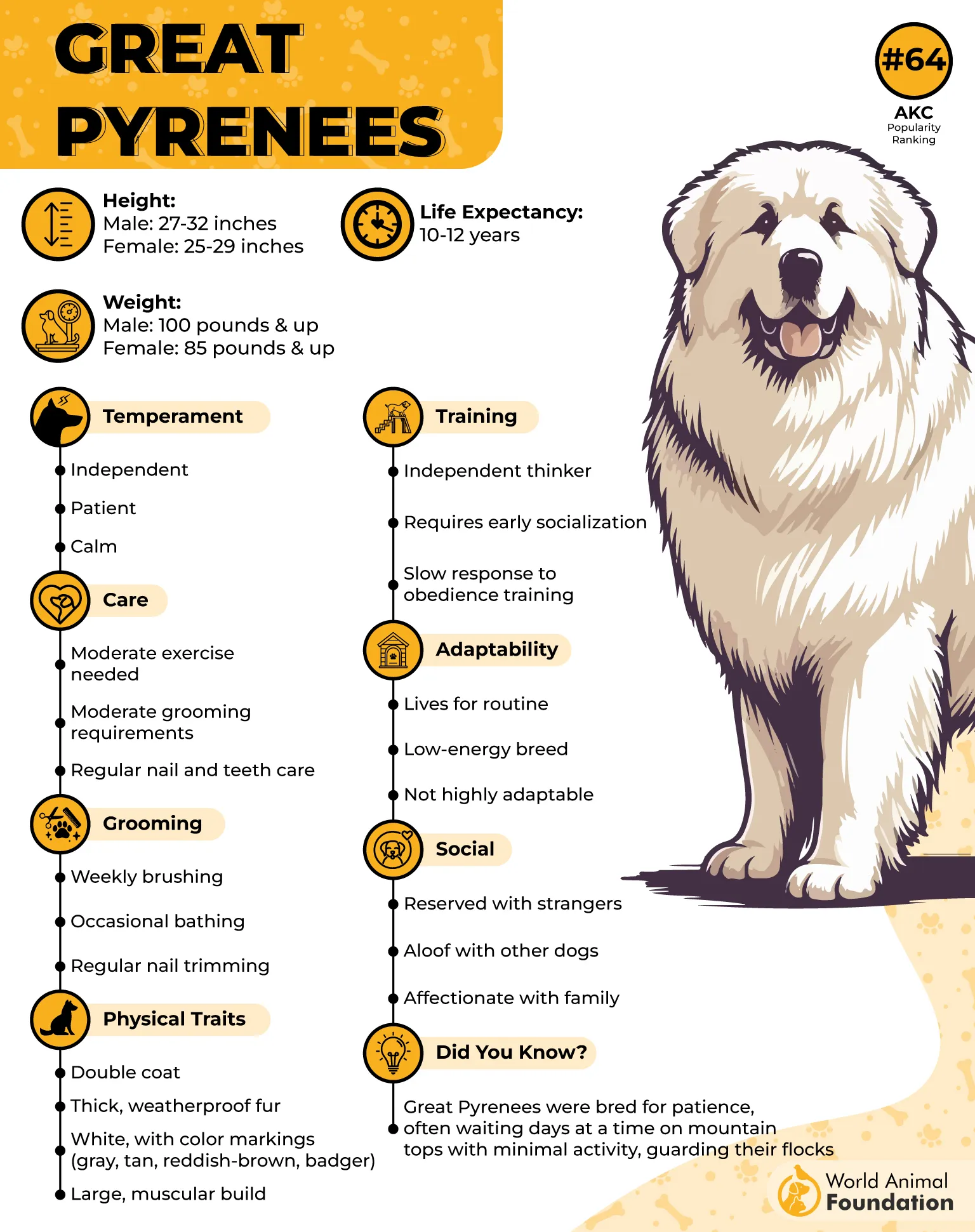
The Great Pyrenees, half-asleep but ever alert, rises slowly, surveys the darkness, and releases a thunderous bark that echoes down the valley like nature’s alarm system. Suddenly, that bear decides the next valley looks much more appealing.
That’s the Pyrenees way — calm confidence and quiet courage. They’re not aggressive by nature; they’re just really good at making trouble think twice.
So whether it’s chasing bears from mountain camps or keeping your garden safe from raccoons, the Great Pyrenees proves that true strength doesn’t have to roar — sometimes, it just barks politely, wags its tail, and stands its ground.
7. Akbash
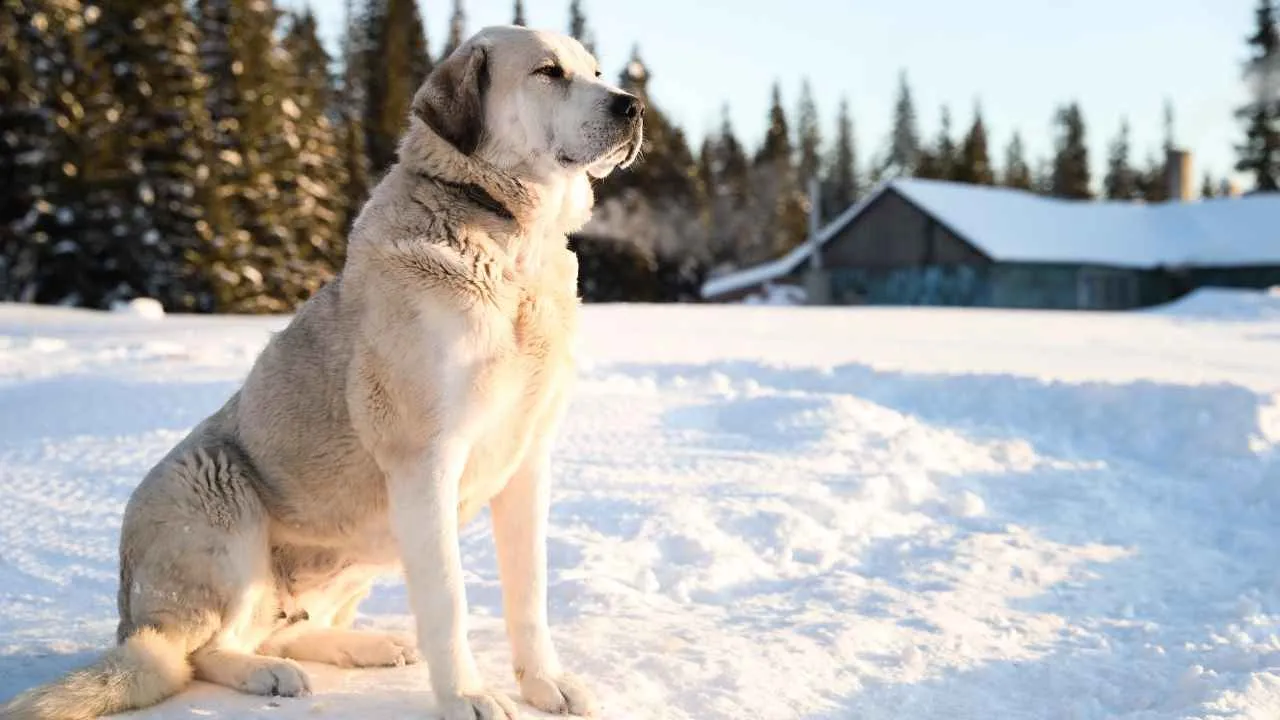
Hailing from Turkey (like its cousin, the Anatolian Shepherd), the Akbash has been protecting flocks from predators — including wolves and bears — for thousands of years. The Akbash stands out for its striking white coat, which isn’t just for looks.
As per Wikipedia, that snowy color helped them blend in with their flocks, allowing them to stay hidden from predators until it was too late for the enemy to realize… that fluffy “sheep” charging toward them was actually a 120-pound powerhouse with paws of steel and a heart of gold.
These dogs are independent thinkers, bred to make decisions on their own while watching over livestock in remote, mountainous terrain. They don’t need to be told what to do — they’ve got centuries of instincts built right in.
Despite their working roots, Akbash dogs are incredibly gentle and affectionate with their families. They have a quiet dignity about them — they’re not the clingy type, but they’ll always be nearby, keeping a watchful eye.
Their temperament is a blend of grace and grit — calm when things are peaceful, fearless when they’re not. They don’t bark without reason, but when they do, you’ll know it’s serious. Think of them as the strong, silent hero in every action movie — the one who doesn’t say much but always saves the day.
So whether it’s guarding a flock from prowling bears in the Anatolian hills or keeping your backyard raccoon-free, the Akbash is a timeless symbol of courage, loyalty, and quiet strength.
8. Komondor
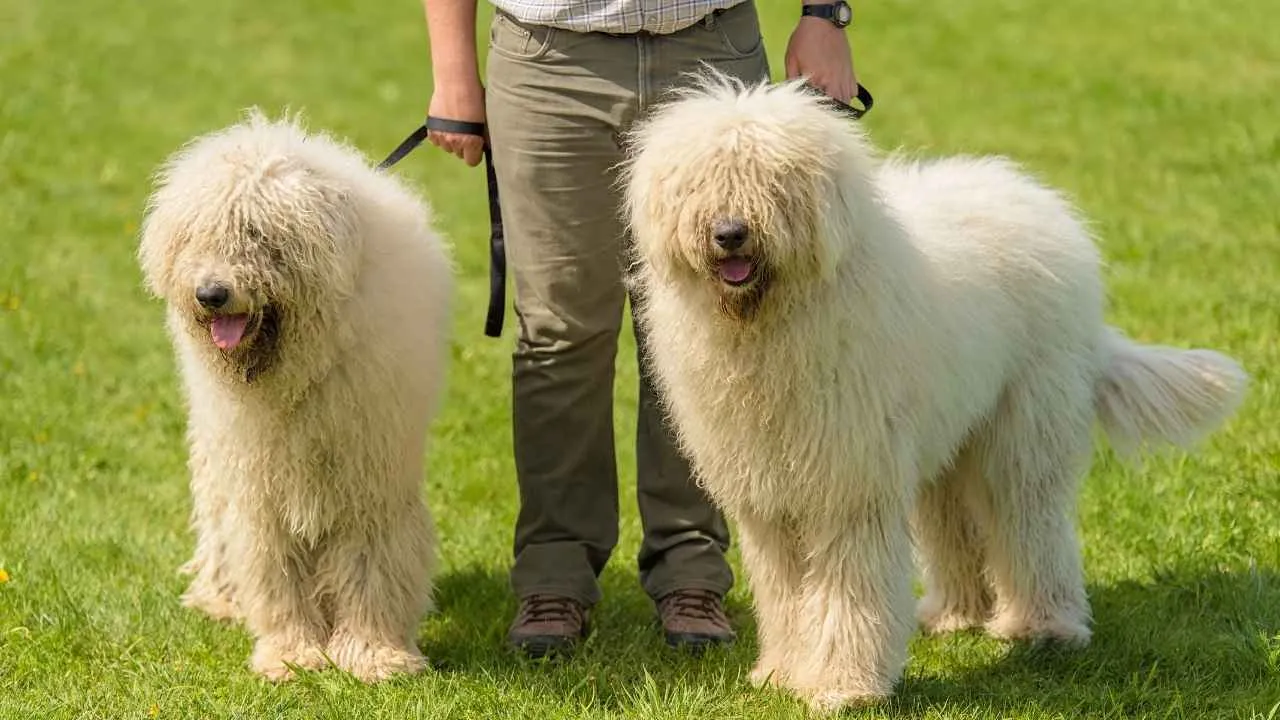
At first glance, you might think someone left a giant mop out in the field — but take a closer look, and you’ll realize that mop has eyes, teeth, and the bravery to chase off a bear.
Meet the Komondor, Hungary’s most iconic and most misunderstood guardian dog. With its signature corded coat and calm confidence, the Komondor looks like it just rolled out of a 1970s shag carpet commercial — but don’t let that fool you.
The Komondor was bred centuries ago by Hungarian shepherds to guard livestock against wolves, thieves, and yes, the occasional bear that wandered a little too close to the flock.
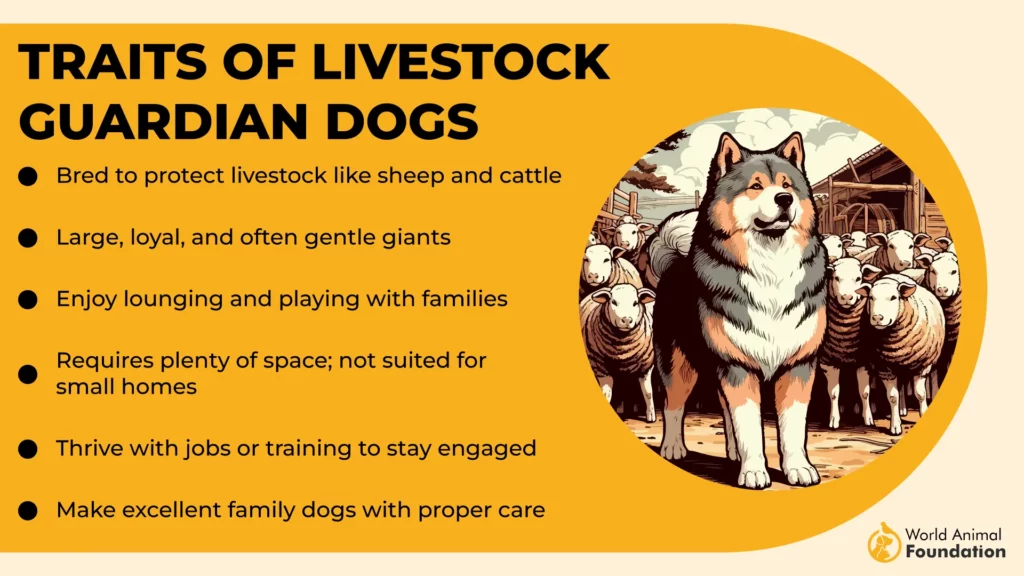
Those thick cords protected them from bites and harsh weather while helping them blend perfectly with their sheep. Don’t underestimate them because of their goofy looks — Komondors are all business when it comes to protection.
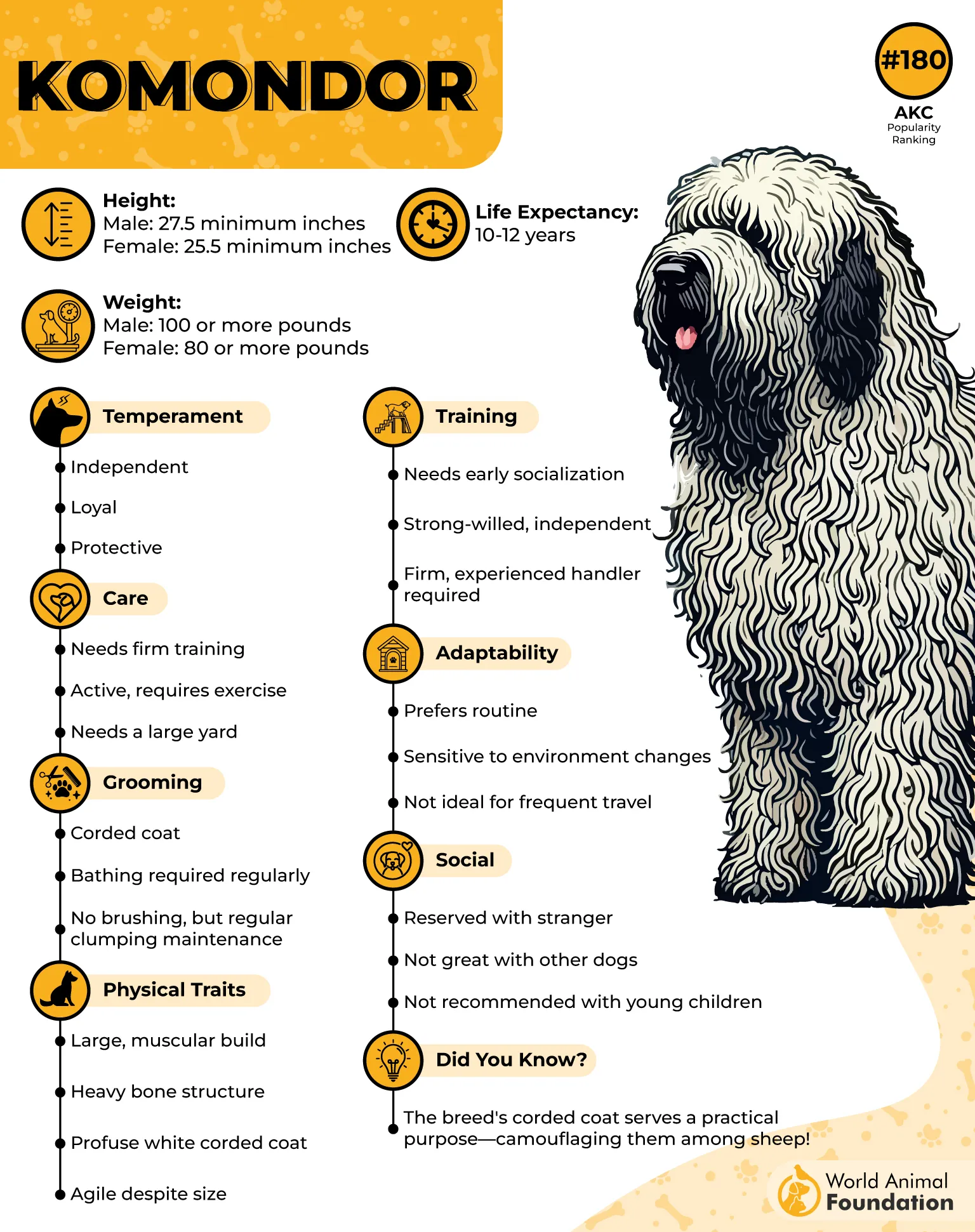
They’re alert, loyal, and unflinchingly brave. When danger strikes, this walking mop doesn’t just bark — it booms. Their deep, resonant bark can be heard across valleys, and their presence alone is often enough to send predators packing.
So, while they may look like they belong in a cleaning supplies commercial, the Komondor is actually one of the toughest, most fearless guardians in the dog world — a fluffy fortress on four legs that can stare down a bear and still look fabulous doing it.
9. Plott Hound
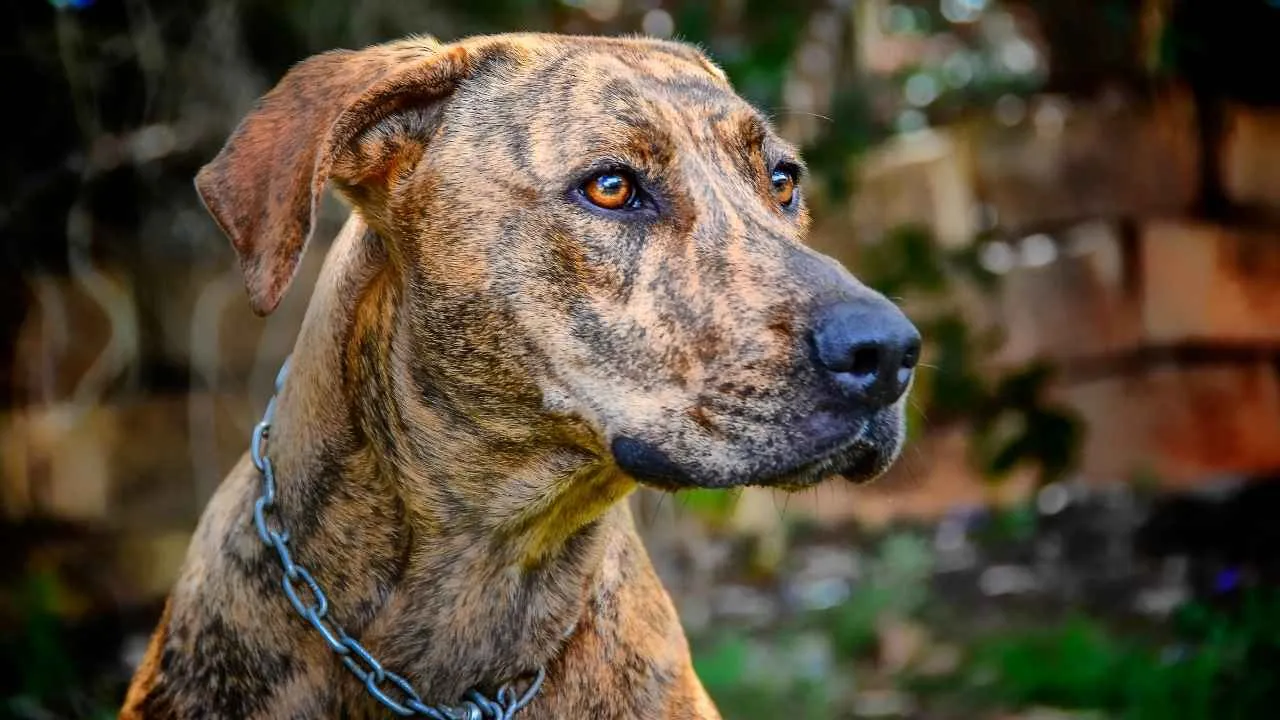
This sleek, muscular hound may not have the size of a mountain guardian or the fluff of a snow dog, but don’t be fooled — what the Plott lacks in bulk, it makes up for in pure grit.
Bred in Germany and brought to America in 1750 by the Plott family, this breed quickly became a legend in the rugged Appalachian Mountains.
There, it earned its reputation as one of the most fearless and tireless bear hunters in history. The Plott isn’t just a chaser — it’s a pursuer. Once a Plott catches a bear’s scent, it’s game on. They’ll follow the trail through rivers, forests, and mountains, undeterred by terrain, weather, or common sense.
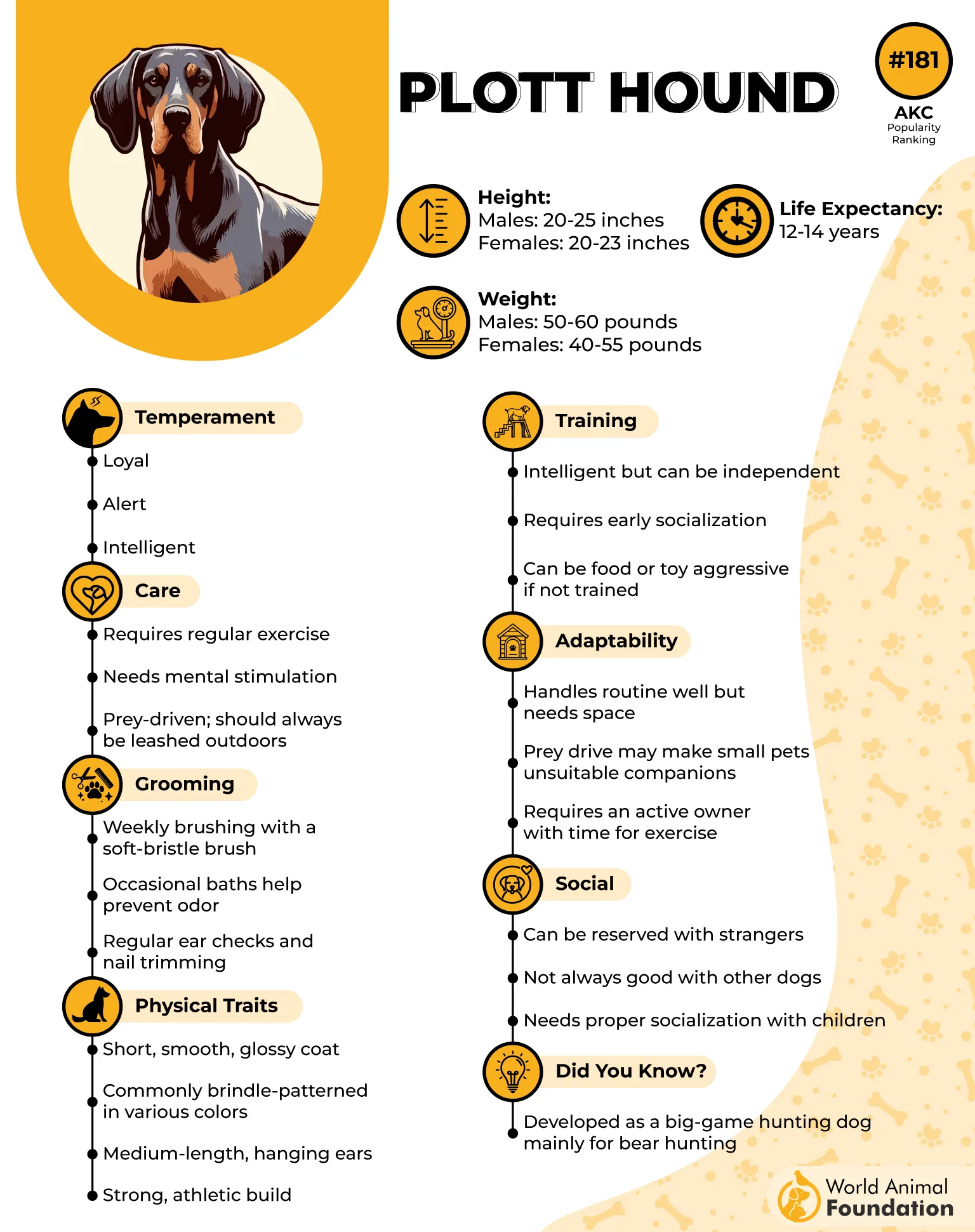
Known for their endurance and intelligence, Plott Hounds are born problem-solvers. They work in packs, communicating through their signature “bugle” — a deep, melodic howl that echoes through the trees like an ancient hunting song.
But don’t mistake the Plotts’ relentless drive in the field for a wild temperament at home. Off-duty, they’re gentle, affectionate, and surprisingly chill — the kind of dog who’ll chase a bear all morning and then nap peacefully at your feet all afternoon.
So, if a bear happens to wander too close, the Plott won’t back down or bark in panic — he’ll just flash a confident look that says, “You can run, but I’ll find you.”
Conclusion
Dog breeds that chased bears away from camps have long proven to be smart, trained, and alert protectors of home territory. From grizzly bears to black bears in national parks, these dogs learn quickly and use their bark, hunting instincts, and keen senses to safeguard families and wildlife alike. Owners raising young pups or puppies can see early socialization, exercise, and consistent training turn them into good family dogs and reliable companions against threats like coyotes, cougars, and even grizzly bears.
Responsible breeders and owners can raise pups who understand safety without needing traps, rubber bullets, or aggressive measures. With proper care, rest, food, and wonder-filled training, these dogs become more than guardians—they’re devoted family members who respect wildlife while defending their territory. For families seeking smart, capable, and loyal pups, these breeds are a good choice for protection, companionship, and adventure.


